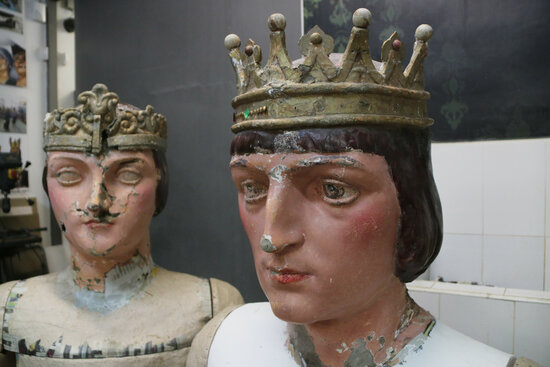Traditional dancing giants in rural Catalonia in line for €5,000 makeover
“Gegants” are an expression of identity in Catalonia often seen in local festivities

“Gegants,” traditional costumed giant figures that spin around in local celebrations and parades, usually several meters tall with painted paper maché heads and arms, are expressions of local identity in Catalonia.
The giants usually depict archetypes of the town and they are inspired by historical figures of local relevance such as the king and the queen or the bourgeois and the peasant.
Dances are accompanied by several musicians playing different instruments, the most traditional and important one “la gralla,” and each giant group has its own particular performance.
Now, Vimbodí and Poblet, a rural town in central Catalonia, is spending €5,000 to restore its “Gegants”.
The Giant King figures will regain their original appearance thanks to the “Gegant” of Falset, as it was created in the same workshop, in El Ingenio de Barcelona.
Over time and as a consequence of previous aggressive restorations, Vimbodí and Poblet’s figures suffered irreparable damage, only retaining the original heads and hands.
Núria Gallard, a member of the Vimbodí and Poblet “Gegants” group said: “The giants have been asking for a renovation for a long time and it was beyond the aesthetic. The structure was very unbalanced and affected the dances.”
The process will last until the end of summer and will cost about €5,000. Also, a glassmaker will make some jewels for the giant couple, which will be used for the first time at the Vítrum, a local celebration.
History of Giant King figures
The Giant Kings of Vimbodí and Poblet date from 1955, when they were bought by the Festival Commission of the Santa Teresa de Reus district. Eleven years later, they were sold to the Casal de l’Espluga de Francolí, which, some time later, withdrew them.
It was in the early eighties when the giant couple was ceded to the municipality of Vimbodí and Poblet until the present day.